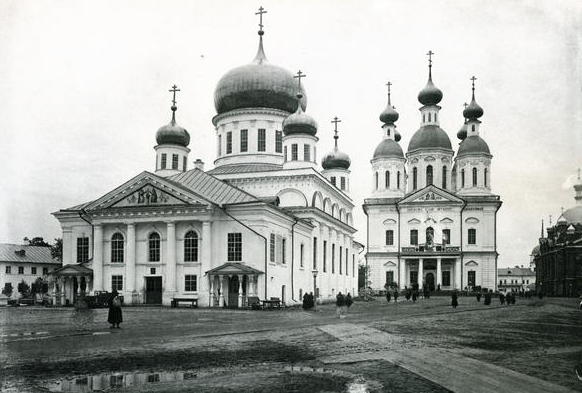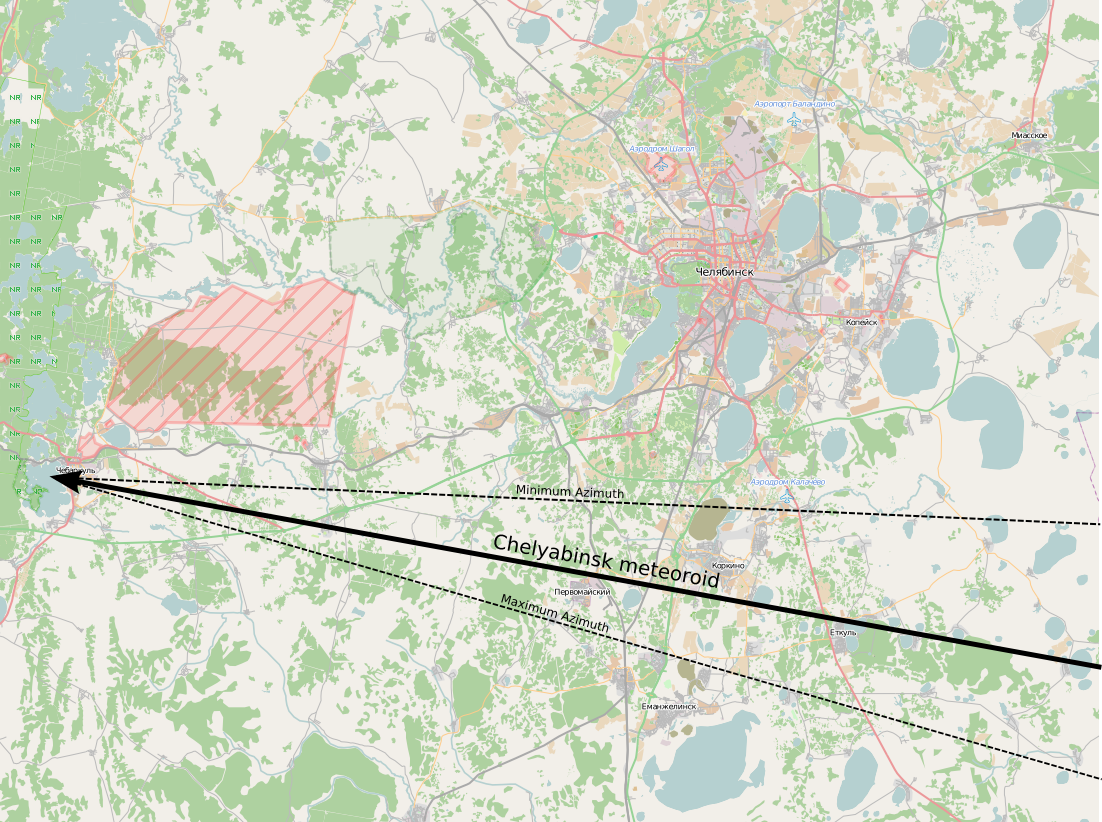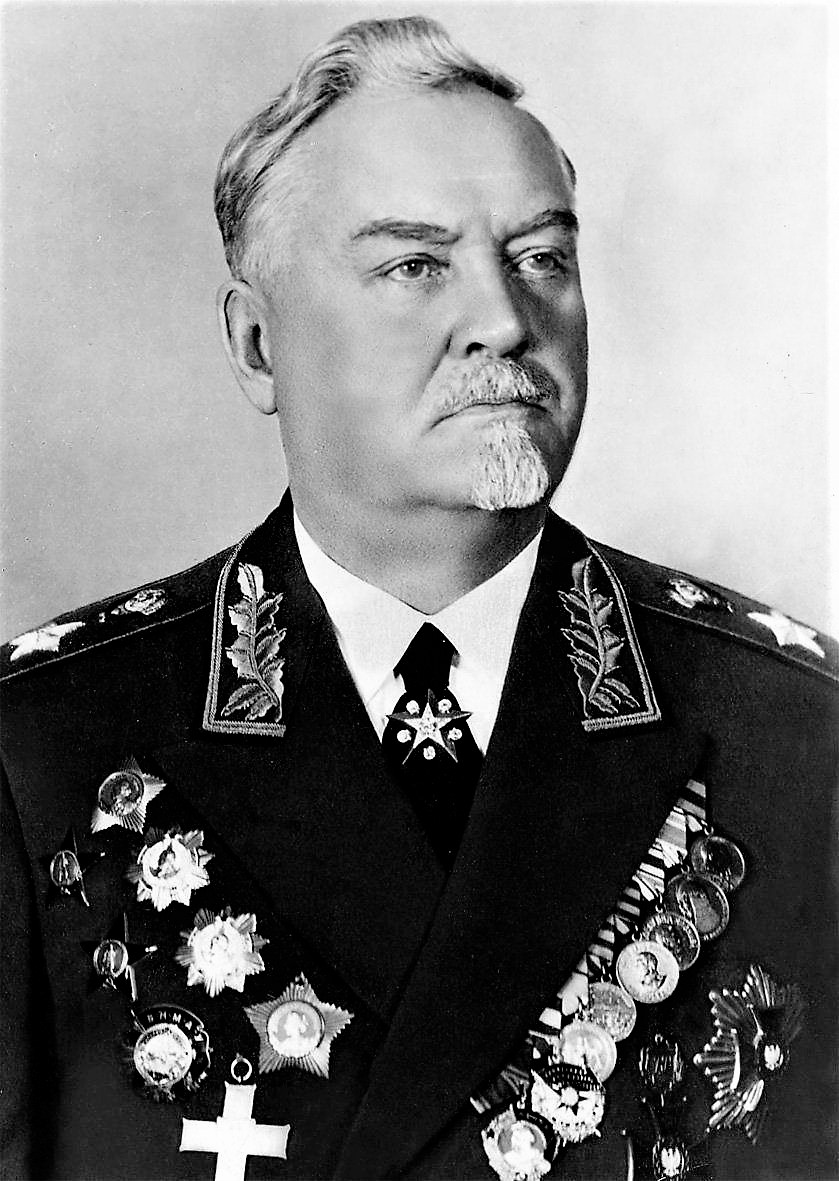|
Joe 4
Joe 4 was an American nickname for the first Soviet test of a thermonuclear weapon on August 12, 1953, that detonated with a force equivalent to 400 kilotons of TNT. The proper Soviet terminology for the warhead was RDS-6s, , . RDS-6 utilized a scheme in which fission and fusion fuel (lithium-6 deuteride) were " layered", a design known as the ''Sloika'' (russian: Слойка, links=no, named after a type of layered puff pastry) model in the Soviet Union. A ten-fold increase in explosive power was achieved by a combination of fusion and fission. A similar design was earlier theorized by Edward Teller, but never tested in the U.S., as the " Alarm Clock". Description The Soviet Union started studies of advanced nuclear bombs and a hydrogen bomb, code named RDS-6, in June 1948. The studies would be done by KB-11 (usually referred to as Arzamas-16, the name of the town) and FIAN. The first hydrogen bomb design was the Truba (russian: Труба, pipe/cylinder) (RDS-6t)). In March ... [...More Info...] [...Related Items...] OR: [Wikipedia] [Google] [Baidu] |
Semipalatinsk Test Site
The Semipalatinsk Test Site (Russian language, Russian: Семипалатинск-21; Semipalatinsk-21), also known as "The Polygon", was the primary testing venue for the Soviet Union's nuclear weapons. It is located on the steppe in northeast Kazakhstan (then the former Kazakh Soviet Socialist Republic, Kazakh SSR), south of the valley of the Irtysh River. The scientific buildings for the test site were located around west of the town of Semey, Semipalatinsk (later renamed Semey), near the border of East Kazakhstan Region and Pavlodar Region with most of the nuclear tests taking place at various sites further to the west and south, some as far as into Karagandy Region. The former Soviet Union conducted 456 nuclear tests at Semipalatinsk from 1949 until 1989 with little regard for their effect on the local people or environment. The full impact of radiation exposure was hidden for many years by Soviet authorities and has only come to light since the test site closed in 1991. Ac ... [...More Info...] [...Related Items...] OR: [Wikipedia] [Google] [Baidu] |
Arzamas-16
Sarov (russian: Саро́в) is a closed town in Nizhny Novgorod Oblast, Russia. It was known as Gorkiy-130 (Горький-130) and Arzamas-16 (), after a (somewhat) nearby town of Arzamas,SarovLabsCreation of Nuclear Center Arzamas-16/ref> from 1946 to 1991. Until 1995, it was known as Kremlyov/Kremlev/Kremljov (). The town is closed as it is the Russian center for nuclear research. Population: 92,047 ( 2010 Census); 87,652 ( 2002 Census) History The history of the town can be divided into two different periods. In the earlier history of Russia it was known as one of the holy places of the Russian Orthodox Church, because of its monastery, that gave Russia one of its greatest saints, St. Seraphim. Since the 1940s, it has gradually become the center for research and production of Soviet and later Russian nuclear weapons. The history of human settlement in the area around Sarov goes back at least to the 12th–13th centuries, when a large Mordvin settlement was foun ... [...More Info...] [...Related Items...] OR: [Wikipedia] [Google] [Baidu] |
2013 Russian Meteor Event
The Chelyabinsk meteor was a superbolide that entered Earth's atmosphere over the southern Ural region in Russia on 15 February 2013 at about 09:20 YEKT (03:20 UTC). It was caused by an approximately near-Earth asteroid that entered the atmosphere at a shallow 18.3 ± 0.4 degree angle with a speed relative to Earth of 19.16 ± 0.15 kilometres per second (69,000 km/h or 42,690 mph). The light from the meteor was briefly brighter than the Sun, visible up to away. It was observed over a wide area of the region and in neighbouring republics. Some eyewitnesses also felt intense heat from the fireball. The object exploded in a meteor air burst over Chelyabinsk Oblast, at a height of around . The explosion generated a bright flash, producing a hot cloud of dust and gas that penetrated to , and many surviving small fragmentary meteorites. The bulk of the object's energy was absorbed by the atmosphere, creating a large shock wave with a total kinetic energy before a ... [...More Info...] [...Related Items...] OR: [Wikipedia] [Google] [Baidu] |
Kazakh Soviet Socialist Republic
; kk, Қазақ Советтік Социалистік Республикасы) *1991: Republic of Kazakhstan (russian: Республика Казахстан; kk, Қазақстан Республикасы) , linking_name = the Kazakh Soviet Socialist Republic , year_start = 1936 , event_start = Elevation to a Union Republic , date_start = 5 December , event1 = Jeltoqsan riots , date_event1 = 16 December 1986 , event2 = Sovereignty declared , date_event2 = 25 October 1990 , event3 = Renamed Republic of Kazakhstan , date_event3 = 10 December 1991 , event4 = Independence declared , date_event4 = 16 December 1991 , date_end = 26 December , event_end = Independence recognised , year_end = 1991 , p1 = Kazakh ASSR , s1 = Kazakhstan ... [...More Info...] [...Related Items...] OR: [Wikipedia] [Google] [Baidu] |
RDS-37
RDS-37 was the Soviet Union's first two-stage hydrogen bomb, first tested on 22 November 1955. The weapon had a nominal yield of approximately 3 megatons. It was scaled down to 1.6 megatons for the live test. Leading to the RDS-37 The RDS-37 was a reaction to the efforts of the United States. Previously, the Soviet Union allegedly used many of their spies in the U.S. to help them generate methods and ideas for the nuclear bomb. The creation of the hydrogen bomb required less usage of this method, although they still received help from some spies, most importantly, Klaus Fuchs. In 1945, the Soviet Union reached a decision to work on a design for a "super bomb". Also in 1945, Enrico Fermi gave lectures at Los Alamos discussing the fusion process. At the end of his lecture he stated "so far all schemes for the initiation of the super rerather vague". In the spring of 1946, Edward Teller set up a conference to assess all the information known about the hydrogen bomb. Klaus Fuc ... [...More Info...] [...Related Items...] OR: [Wikipedia] [Google] [Baidu] |
Nikita Khrushchev
Nikita Sergeyevich Khrushchev (– 11 September 1971) was the First Secretary of the Communist Party of the Soviet Union from 1953 to 1964 and chairman of the country's Council of Ministers from 1958 to 1964. During his rule, Khrushchev stunned the communist world with his denunciation of his predecessor Joseph Stalin's crimes, and embarked on a policy of de-Stalinization with his key ally Anastas Mikoyan. He sponsored the early Soviet space program, and enactment of moderate reforms in domestic policy. After some false starts, and a narrowly avoided nuclear war over Cuba, he conducted successful negotiations with the United States to reduce Cold War tensions. In 1964, the Kremlin leadership stripped him of power, replacing him with Leonid Brezhnev as First Secretary and Alexei Kosygin as Premier. Khrushchev was born in 1894 in a village in western Russia. He was employed as a metal worker during his youth, and he was a political commissar during the Russian Civil Wa ... [...More Info...] [...Related Items...] OR: [Wikipedia] [Google] [Baidu] |
Nikolai Bulganin
Nikolai Alexandrovich Bulganin (russian: Никола́й Алекса́ндрович Булга́нин; – 24 February 1975) was a Soviet politician who served as Minister of Defense (1953–1955) and Premier of the Soviet Union (1955–1958) under Nikita Khrushchev, following service in the Red Army and as defence minister under Joseph Stalin. Early life and career Bulganin was born in 1895 in Nizhny Novgorod. The son of an office worker, he was of Russian ethnicity. He joined the Bolshevik Party in March 1917 and was recruited in 1918 into the Cheka, the Bolshevik regime's political police, where he served until 1922. During the summer of 1918, he worked with Lazar Kaganovich, the local communist leader, in imposing the Red Terror in Nizhny Novgorod. He worked with Kaganovich again in Turkestan in 1920. After the Russian Civil War (1917-1923), Bulganin became an industrial manager and worked in the electricity administration until 1927. He was the director of the Mosco ... [...More Info...] [...Related Items...] OR: [Wikipedia] [Google] [Baidu] |
R-7 Semyorka
The R-7 Semyorka (russian: link=no, Р-7 Семёрка), officially the GRAU index 8K71, was a Soviet missile developed during the Cold War, and the world's first intercontinental ballistic missile. The R-7 made 28 launches between 1957 and 1961, but was never deployed operationally. A derivative, the R-7A, was deployed from 1959 to 1968. To the West it was unknown until its launch (later it would get the NATO reporting name SS-6 Sapwood). In modified form, it launched Sputnik 1, the first artificial satellite, into orbit, and became the basis for the R-7 family which includes Sputnik, Luna, Molniya, Vostok, and Voskhod space launchers, as well as later Soyuz variants. The widely used nickname for the R-7 launcher, "Semyorka", means "digit 7" in Russian. Description The R-7 was long, in diameter and weighed ; it had two stages, powered by rocket engines using liquid oxygen (LOX) and kerosene and capable of delivering its payload up to , with an accuracy ( CEP) of around ... [...More Info...] [...Related Items...] OR: [Wikipedia] [Google] [Baidu] |
Lavrentiy Beria
Lavrentiy Pavlovich Beria (; rus, Лавре́нтий Па́влович Бе́рия, Lavréntiy Pávlovich Bériya, p=ˈbʲerʲiə; ka, ლავრენტი ბერია, tr, ; – 23 December 1953) was a Georgian Bolshevik and Soviet politician, Marshal of the Soviet Union and state security administrator, chief of the Soviet security, and chief of the People's Commissariat for Internal Affairs (NKVD) under Joseph Stalin during the Second World War, and promoted to deputy premier under Stalin in 1941. He officially joined the Politburo in 1946. Beria was the longest-lived and most influential of Stalin's secret police chiefs, wielding his most substantial influence during and after the war. Following the Soviet invasion of Poland in 1939, he was responsible for organizing purges such as the Katyn massacre of 22,000 Polish officers and officials. He would later also orchestrate the forced upheaval of minorities from the Caucasus as head of the NKVD, an act ... [...More Info...] [...Related Items...] OR: [Wikipedia] [Google] [Baidu] |
Ivy Mike
Ivy Mike was the codename given to the first full-scale test of a thermonuclear device, in which part of the explosive yield comes from nuclear fusion. Ivy Mike was detonated on November 1, 1952, by the United States on the island of Elugelab in Enewetak Atoll, in the now independent island nation of the Marshall Islands, as part of Operation Ivy. It was the first full test of the Teller–Ulam design, a staged fusion device. Due to its physical size and fusion fuel type ( cryogenic liquid deuterium), the "Mike" device was not suitable for use as a deliverable weapon. It was intended as a "technically conservative" proof of concept experiment to validate the concepts used for multi-megaton detonations. As a result of the collection of samples from the explosion by U.S. Air Force pilots, scientists found traces of the isotopes plutonium-246 and plutonium-244, and confirmed the existence of the predicted but undiscovered elements einsteinium and fermium. Schedule Beginning w ... [...More Info...] [...Related Items...] OR: [Wikipedia] [Google] [Baidu] |
Vitaly Ginzburg
Vitaly Lazarevich Ginzburg, ForMemRS (russian: Вита́лий Ла́заревич Ги́нзбург, link=no; 4 October 1916 – 8 November 2009) was a Russian physicist who was honored with the Nobel Prize in Physics in 2003, together with Alexei Abrikosov and Anthony Leggett for their "pioneering contributions to the theory of superconductors and superfluids." His career in physics was spent in the former Soviet Union and was one of the leading figure in former Soviet program of nuclear weapons, working towards designs of the thermonuclear devices. He became a member of the Russian Academy of Sciences and succeeded Igor Tamm as head of the Department of Theoretical Physics of the Lebedev Physical Institute of the Russian Academy of Sciences (FIAN). In his later life, Ginzburg become an outspoken atheist and was critical of clergy's influence in Russian society. Biography Vitaly Ginzburg was born to a Jewish family in Moscow on 4 October 1916— the son of an enginee ... [...More Info...] [...Related Items...] OR: [Wikipedia] [Google] [Baidu] |
Andrei Sakharov
Andrei Dmitrievich Sakharov ( rus, Андрей Дмитриевич Сахаров, p=ɐnˈdrʲej ˈdmʲitrʲɪjevʲɪtɕ ˈsaxərəf; 21 May 192114 December 1989) was a Soviet nuclear physicist, dissident, nobel laureate and activist for nuclear disarmament, peace, and human rights. He became renowned as the designer of the Soviet Union's RDS-37, a codename for Soviet development of thermonuclear weapons. Sakharov later became an advocate of civil liberties and civil reforms in the Soviet Union, for which he faced state persecution; these efforts earned him the Nobel Peace Prize in 1975. The Sakharov Prize, which is awarded annually by the European Parliament for people and organizations dedicated to human rights and freedoms, is named in his honor. Biography Early life Sakharov was born in Moscow on May 21, 1921. His father was Dmitri Ivanovich Sakharov, a physics professor and an amateur pianist. His father taught at the Second Moscow State University. Andrei's gran ... [...More Info...] [...Related Items...] OR: [Wikipedia] [Google] [Baidu] |








